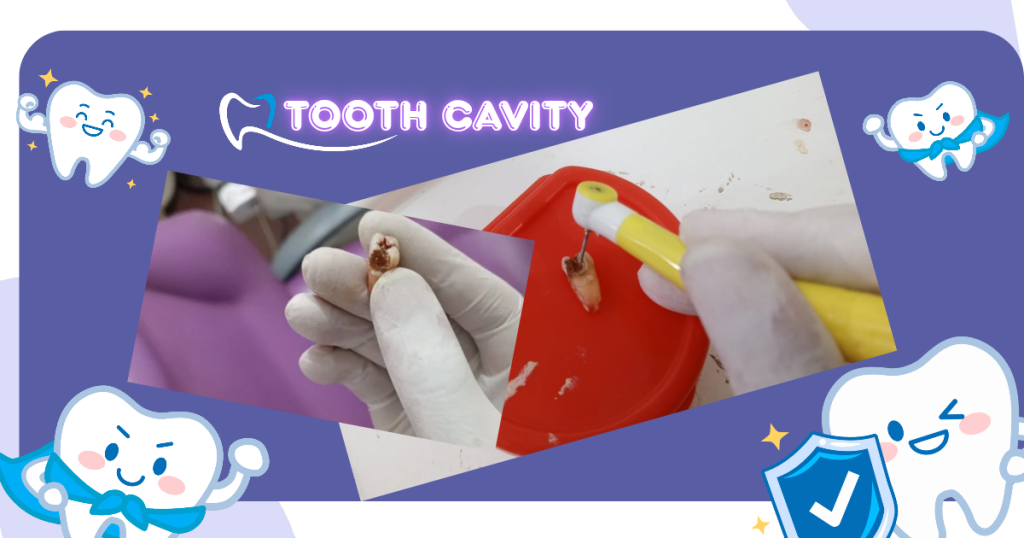Physical Address
304 North Cardinal St.
Dorchester Center, MA 02124
Physical Address
304 North Cardinal St.
Dorchester Center, MA 02124
Ever felt a sharp twinge while sipping tea or noticed a dark spot on your tooth and wondered what’s really going on? A tooth cavity is simply a hole that forms when bacteria in your mouth team up with sugary snacks to produce acid, slowly eating away at your enamel and creating decay—nothing mysterious, just a common issue that affects kids and adults alike in Pakistan and beyond. If you’re new to this, don’t worry; early cavities are painless and totally fixable with a quick filling.In this beginner-friendly guide, we’ll break down exactly what a cavity is, how it starts, easy signs to spot, and simple ways to stop it in its tracks. Let’s keep your smile bright and cavity-free—starting right now!

How a Cavity Forms Step by Step
It kicks off with plaque—that sticky film from food bits and bacteria. When you munch sweets or skip brushing, plaque makes acid that softens enamel. Over time, a tiny hole appears, growing deeper if ignored. In Pakistan, chai with sugar and street snacks like samosas speed this up if not rinsed off.
Early Signs You Can Spot at Home
Look for white spots (early decay), brown/black stains, or holes on teeth. Sensitivity to hot, cold, or sweet foods is a red flag. Bad breath or a funny taste might hint too. Kids often complain of pain while eating—check their molars regularly.
Common Causes in Daily Life
Frequent sugary drinks like Rooh Afza or fizzy colas, poor brushing, and dry mouth from meds play big roles. In Pakistan, pan or gutka chewing adds extra risk with tobacco and sugar. Genetics matter, but habits win the battle.
Stages of a Cavity
Starts on enamel (reversible with fluoride), hits dentin (painful, needs filling), then pulp (infection, root canal territory). Catch it early at stage one—regular dentist visits in Lahore or Karachi clinics spot this via X-rays.
Simple Prevention at Home
Brush twice with fluoride toothpaste—Colgate or Sensodyne work great locally. Floss daily, cut sugary snacks between meals, and sip water after chai. Use a soft brush for kids and teach them early—schools in Pakistan now push oral health programs.
Treatment Options
Small cavities get cleaned and filled with composite (tooth-colored) or silver amalgam—quick 20-minute job. Deeper ones might need crowns. Costs in 2025: PKR 2,000-5,000 for fillings in most cities, cheaper at government clinics.
Kids and Cavities in Pakistan
Baby teeth matter—cavities here affect permanent ones. Limit bottled milk at night, use straws for juices. Many pediatric dentists in Islamabad offer fun check-ups with stickers to make it easy.
FAQs About Tooth Cavities
Are cavities contagious?
Kinda—bacteria spread via sharing spoons or kisses, so avoid tasting baby food off the same utensil.
Can I fix a cavity at home?
Nope—home remedies like clove oil ease pain temporarily, but only a dentist removes decay.
How long before a cavity hurts?
Months to years—early ones are silent, so 6-month check-ups are key.
Is black spot always a cavity?
Often yes, but stains from paan or tea can mimic—dentist confirms with a probe.
Do fillings last forever?
5-15 years depending on material and care—composite blends better, amalgam lasts longer.
Wrapping up this beginner-friendly dive into tooth cavities, remember it’s just a sneaky hole from everyday bacteria and sweets—nothing to fear when you catch it early with simple brushing, flossing, and dentist visits every six months, especially in Pakistan where chai and mithai can speed things along. Whether it’s your first dark spot or you’re teaching kids to brush after nihari, these basics empower you to stop decay before it hurts or costs big at the clinic.